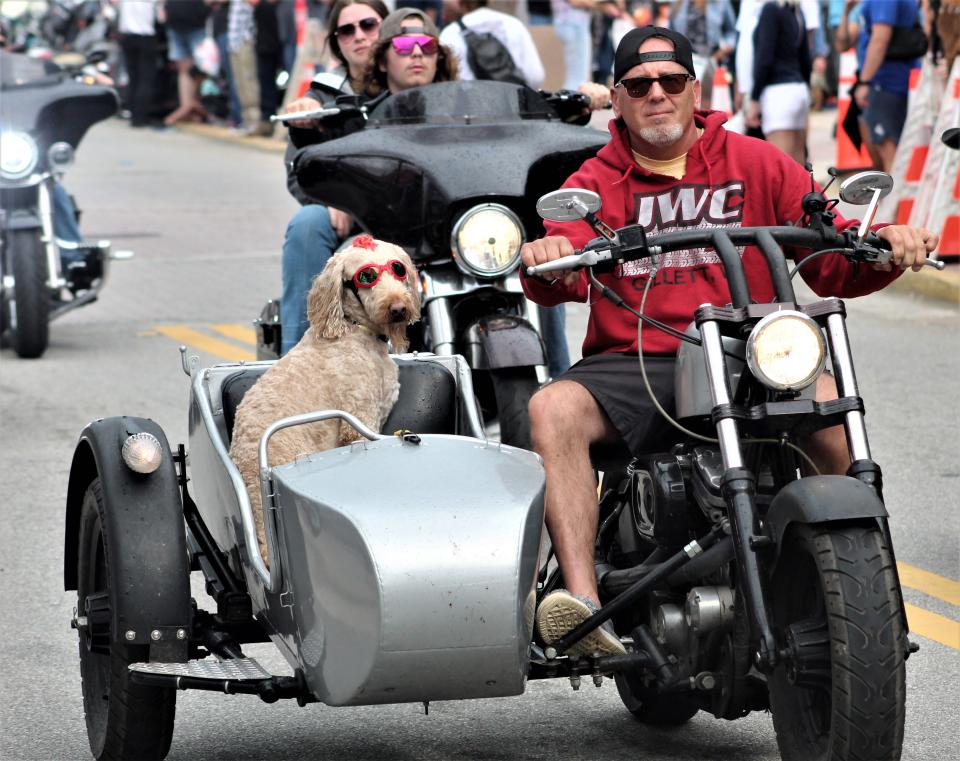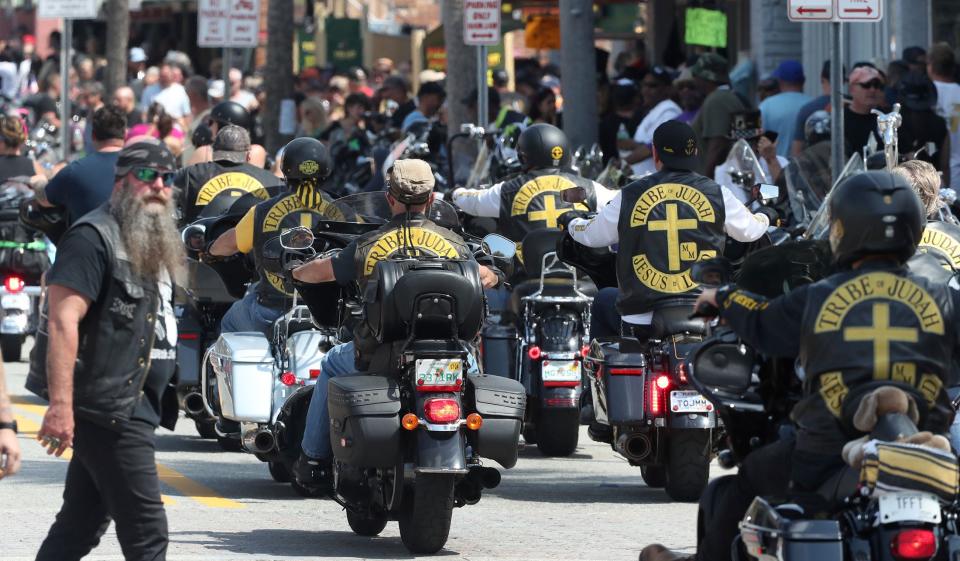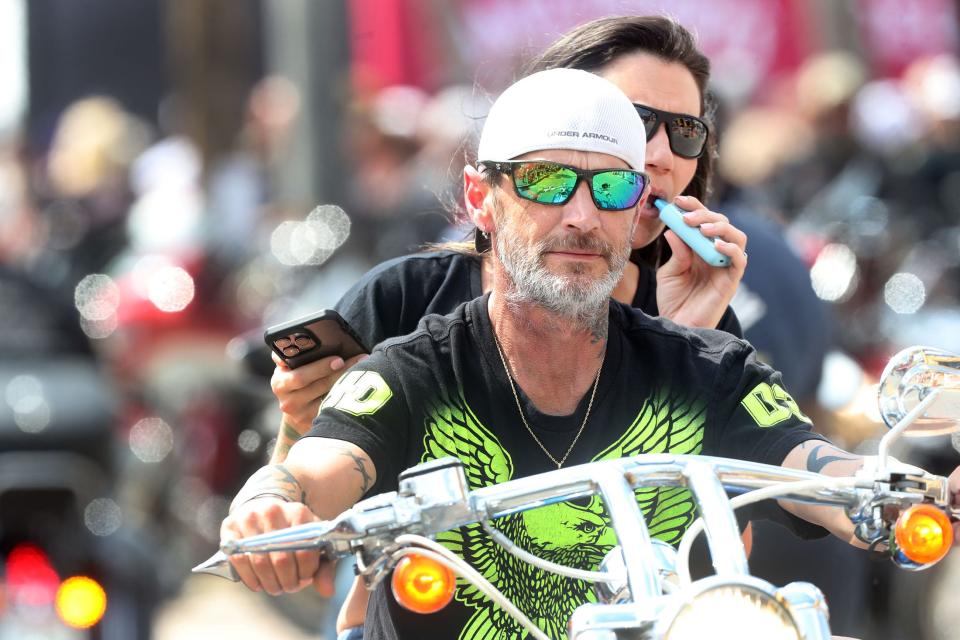Daytona Beach Bike Week crowds top 420,000, based on cellphone tracking technology
More than 420,000 visitors came to Daytona Beach during Bike Week’s 10-day run earlier this month, based on geofencing data used for the first time by the City of Daytona Beach to track the attendance at the mammoth annual event.
The city paid $26,250 for a one-year service term with the analytics firm Placer.ai to calculate the number of Bike Week visitors in the areas surrounding three Bike Week hot spots: Main Street, Daytona International Speedway and Dr. Mary McLeod Bethune Boulevard.
It’s the first time that the city has used a system to make accurate calculations of the attendance at the event, now in its 83rd year, said Susan Cerbone, city spokeswoman.

Placer.ai uses “location intelligence” from cellphones to count visitors, provide “dwell time” in locations, where visitors go prior to coming to Daytona Beach and where they stop after leaving the city.
Placer.ai is among the technology companies that specialize in geofencing, a location-based service by which an app or other software program uses radio frequencies, Wi-Fi, GPS or cellular data to trigger a marketing action when a mobile device enters or exits a virtual geographic boundary.
It’s the same analytics company that provides similar services to the organizers of the iconic Sturgis Motorcycle Rally in South Dakota.
In case you missed it: How big are Daytona Bike Week crowds compared to other U.S. motorcycle rallies?
During Bike Week’s 10-day run from March 1-10, a total of 423,300 unique visitors were tracked at all three geofenced areas. That represented 668,700 “visits” to the three locations, a figure that includes repeat stops by the same individuals.
Placer.ai also used its technology to offer a comparison of how attendance at this year’s event compared with recent Bike Week gatherings, according to the city. The company stated that this year’s Bike Week surpassed 2023’s edition of the event by just over 2% and topped the 2019 pre-COVID Bike Week by 150,220 visits or just over 30%.
“Visitor numbers aren’t going to be exact, but it’s a start and better than a wild guess,” Jeff Brown, the city’s Economic and Strategic Opportunities Director, stated in a City Manager update. “The totals don’t account for people without a cellphone or those without their location services turned on.”
Technology shows Main Street remains biggest draw
In Daytona Beach, the traditional Bike Week hub of Main Street attracted the most visitors, based on the geofencing data. Over the 10-day run, the technology tracked 233,500 visitors that represented 382,400 “visits,” accounting for repeat stops.
The data also included average “dwell time,” or the length of time spent in a particular location.
On Main Street, the average time was 118 minutes, just short of two hours. According to the tracking information, the top crowds on Main Street during the event were recorded on Saturday, March 9, during the event’s closing weekend, when 20,300 visitors packed the popular thoroughfare.

With its mix of motorcycle races, demo rides and motorcycle marketplace, Daytona International Speedway also was a popular stop, based on the data. It attracted 169,600 visitors through the event, representing 257,000 visits, including multiple stops. Average dwell time at the Speedway was 214 minutes, or nearly 3-1/2 hours.
In Midtown, 20,200 visitors were recorded throughout the event along Dr. Mary McLeod Bethune Boulevard, home to the annual informal Black Bike Week gathering during Bike Week’s closing weekend. They represented 29,400 visits, including repeat stops, as well as an average dwell time of 107 minutes.
The data also offered demographic information about the crowds that attended the event.
On Main Street, for instance, the median age of visitors was 45 and median household income was $55,000. Based on the data, 67%, were white, with 27% having earned at least a bachelor’s degree.
Technology offers more accurate picture of Bike Week crowds
The use of geofencing technology to track Bike Week crowds within portions of Daytona Beach’s city limits offers hard data on an event that hasn't updated its attendance calculations in years.
The event is typically estimated to attract 300,000-400,000 annually to a region that stretches throughout Volusia, Flagler, Brevard, Seminole, Orange, St. Johns and Duval counties, according to the event’s organizer, the Daytona Regional Chamber of Commerce.
That’s a ballpark estimate that has remained unchanged at least for a decade, based on data that’s nearly two decades old, according to Janet Kersey, the Chamber’s executive vice president and chief operating officer.

Ahead of this year’s event, Kersey said that the Chamber also was exploring the cost and potential benefits of geofencing technology.
"We definitely are interested in it, the whole platform, how it works, what type of data it provides,” she said at the time. “If it’s something reasonable that we can do and it has value to it, we’re not opposed to it.”
This article originally appeared on The Daytona Beach News-Journal: Daytona Bike Week crowds top 420,000 based on cellphone data

